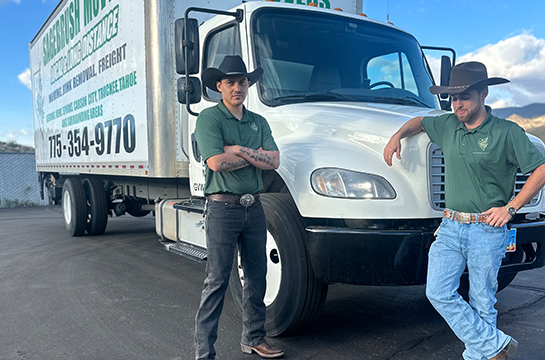Moving down the street or across the country can feel like wrestling an octopus made of bubble wrap. You’re excited, nervous, and somehow already missing the pizza place you haven’t left yet. But before you start tossing boxes into a truck, you’re probably wondering: is a local move really all that different from a long-distance one, or are moving companies just making fancy labels?
Local moves usually stay within about 50–100 miles and are billed by the hour, while long-distance moves stretch state lines (or big mileage limits) and are priced mostly by weight, distance, and extra services. Knowing which category your move falls into helps you budget, pick the right mover, and avoid nasty “oops, that wasn’t included” surprises.
In the next few minutes, we’ll break down mileage rules, cost calculators, packing hacks, legal paperwork, and timeframes so you can plan your next move without sprouting stress-induced gray hairs.
Local vs. Long-Distance: The Mileage Myth Busted
Local moves are the sprinters of the relocation world—short, fast, and (usually) cheaper. Most companies draw the local line at 50 miles, though some stretch it to 100. Anything beyond that, especially if it crosses a state border, becomes a long distance.
Quick Tip: If you live in a mega-metro area where suburb sprawl is real, double-check mileage with the mover’s GPS before you assume “local.”
How Pricing Works
| Move Type | Typical Distance | How You’re Charged | Average Time to Complete | Extra Fees You Might See |
| Local | 0–50 miles (sometimes up to 100) | Hourly rate (truck + crew) | Same day | Fuel, heavy item fee (piano), stairs |
| Long distance | 50+ miles OR crossing state lines | Weight/volume × miles | 1–14 days (or more) | Line-haul fuel surcharge, overnight storage, tolls |
Why That Matters To Your Wallet
Hourly billing looks friendly until your cousin-turned-helper “forgets” the tape and has to run to the store. Every minute equals money. Long-distance bills, on the other hand, come from a cocktail of weight and mileage. Your 300-pound antique armoire counts way more than your box of throw pillows—and will cost more, too.
Info: Federal regulations (FMCSA) require long-distance movers to provide a written estimate and a copy of “Your Rights and Responsibilities When You Move.” If a mover refuses, sprint away faster than you can say “deposit scam.” FMCSA consumer guide has the fine print if you love bedtime reading.
Timeframes and Logistic Headaches
- Local Moves: The Same-Day Shuffle
Most local jobs start at 8 a.m. and wrap by dinnertime. You’ll be eating pizza on a box-turned-table in your new living room before sunset.
- Long-Distance Moves: The Waiting Game
Trucks criss-crossing states follow legally mandated driver-hour limits. Add weather, weigh stations, and the occasional buffalo herd (hi, Wyoming), and you’re looking at multiple days before your couch arrives.
Fact: The average delivery window for a 1,000-mile move is 5–10 days, but the busy summer season can stretch that to two weeks.
Packing, Insurance, and Paperwork
- Packing Rules
- Local: You can get away with “good-enough” boxing—think sturdy grocery boxes, trash-bagged clothes, and last-minute tosses.
- Long distance: Everything travels farther, bumps harder, and sits longer. Double-wall boxes, crating fragile art, and shrink-wrapping furniture legs become non-negotiables.
Suggestion: Declutter before you pack. Fewer pounds = fewer dollars on long-distance invoices. Donate, sell, or gift the waffle iron you used once.
- Insurance Levels
Local jobs often include a basic form called released value coverage (around $0.60 per pound). Drop a 20-pound TV? You’ll get a whopping $12. For long distance, consider full-value protection so you’re reimbursed the replacement cost, not a wallet-size sympathy check.
Danger: Never sign a blank or partially filled Bill of Lading. It’s the moving contract. No amount of “trust me, we’ll fill it later” is worth your grandmother’s china.
Regulations: Who’s The Boss Of Your Move?
- Local
Rules ride on state-level transportation agencies. Movers need state licenses, and sometimes city permits to park the truck.
- Long distance
Interstate moves are the feds’ turf. Movers must carry a U.S. DOT number and be registered with FMCSA. You can verify a company’s credentials on the FMCSA website in under a minute.
Which Move Type Is Right For You?
- Staying within county lines? Local move—it’s faster and (generally) cheaper.
- Crossing states or hitting triple-digit miles? Long distance—plan for weight-based quotes and a delivery window.
- Edge cases: A 70-mile hop within one state might be “long distance” at Company A but “local” with Company B. Always ask.
Conclusion
Moving near or far boils down to distance, pricing method, timing, and rules. Local moves keep costs hourly and timelines tight, making them a quick sprint. Long-distance moves play by mileage, weight, and federal regulations, turning your relocation into a well-planned road trip for your sofa. Understand those four differences, and you’ll dodge 90 % of common moving headaches. When you’re ready to roll—whether it’s across town or across the country—Sagebrush Movers is just a call away to make the journey smooth.
FAQs
How far is considered a local move?
Most movers label anything under 50 miles (sometimes up to 100) as local but always ask because definitions vary.
Why is long-distance moving more expensive?
Longer mileage, federal compliance, fuel surcharges, and weight-based pricing add layers of cost you don’t see in a local move.
Can I pack my own boxes for a long-distance move?
Absolutely, but poor packing can void insurance claims. Use sturdy boxes and cushion fragile items.
What paperwork do I need for an interstate move?
You’ll sign a Bill of Lading, a Federal Motor Carrier Safety Administration rights booklet, and a detailed inventory list.
How can I save money on either move type?
Declutter beforehand, move during the off-season (October–April) and compare at least three written estimates.

